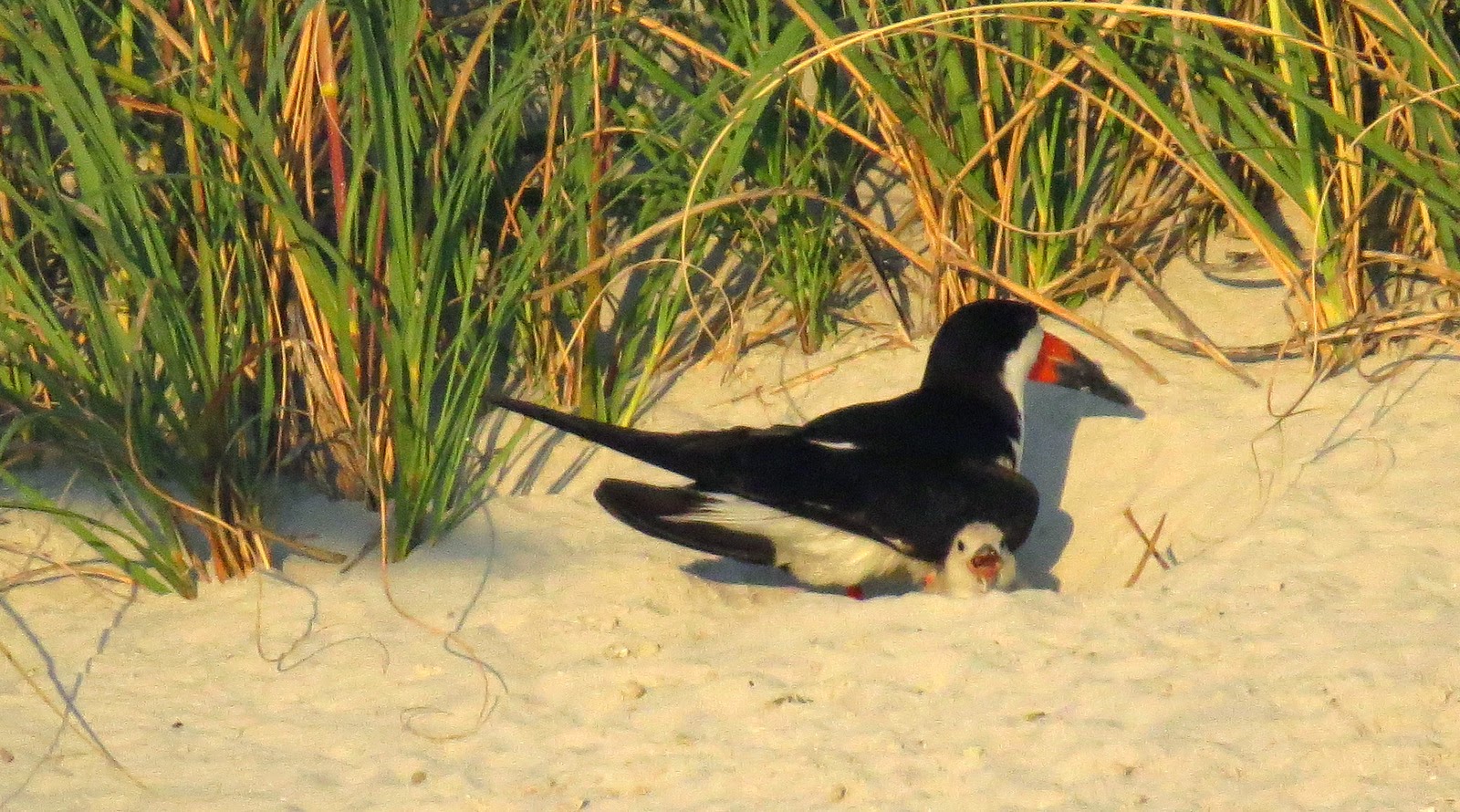Lots of adventure at the colony last week. Several bird stewards were excited to see two Sea Hares on the beach. Both were "swimming" along the shoreline. This was a first for all of us.
And then there are lots of new chicks. The skimmer chicks are very demanding of their parents. The 90+ degree weather has been challenging. Chicks were seen taking refuge under their parents and in the dunes. It is so much fun to ask people passing by if they'd like to see the chicks. Then once they look through the scopes or binoculars an entirely new world is revealed to them.
Black Skimmer Chicks
Common Tern Chicks
The common tern chicks are rapidly growing bigger. They will actually be larger than their parents before they finally slim down and fledge. (Fledge is the stage in a young bird's life when the feathers and wing muscles are sufficiently developed for flight.)
Welcome CKK/ Oystercatcher Banding
Our NC Audubon coastal biologist, Lindsay Addison, came to the colony last week to band our American Oystercatcher chick. It was a fascinating process to witness.
Step 1: Catch the chick!
Step 2: When Lindsay turned the chick over and placed him/her gently in her lap, the chick seemed to be in a trance.
Step 3: Then it was time to but on two bands. One has a tracing number and the other is a bright green band with the large letters CKK. Color banding individual birds helps researchers learn about demographics, movement, habitat requirements, and survival, but only if people report the locations of banded birds.
Step 4: Lindsay then recorded a series of measurements and weighed our chick.
Step 5: Several bird stewards took a moment to be "up close and personal" with our newly named oystercatcher, CKK, before the chick was released. We are happy to report the chick was seen later that day happily reunited with his/her parent.
And finally.... here is a shot of how creative our photographers are in their attempts to record life in the nesting colony.
And don't forget to look carefully as you enter the colony for other signs of life!


































































